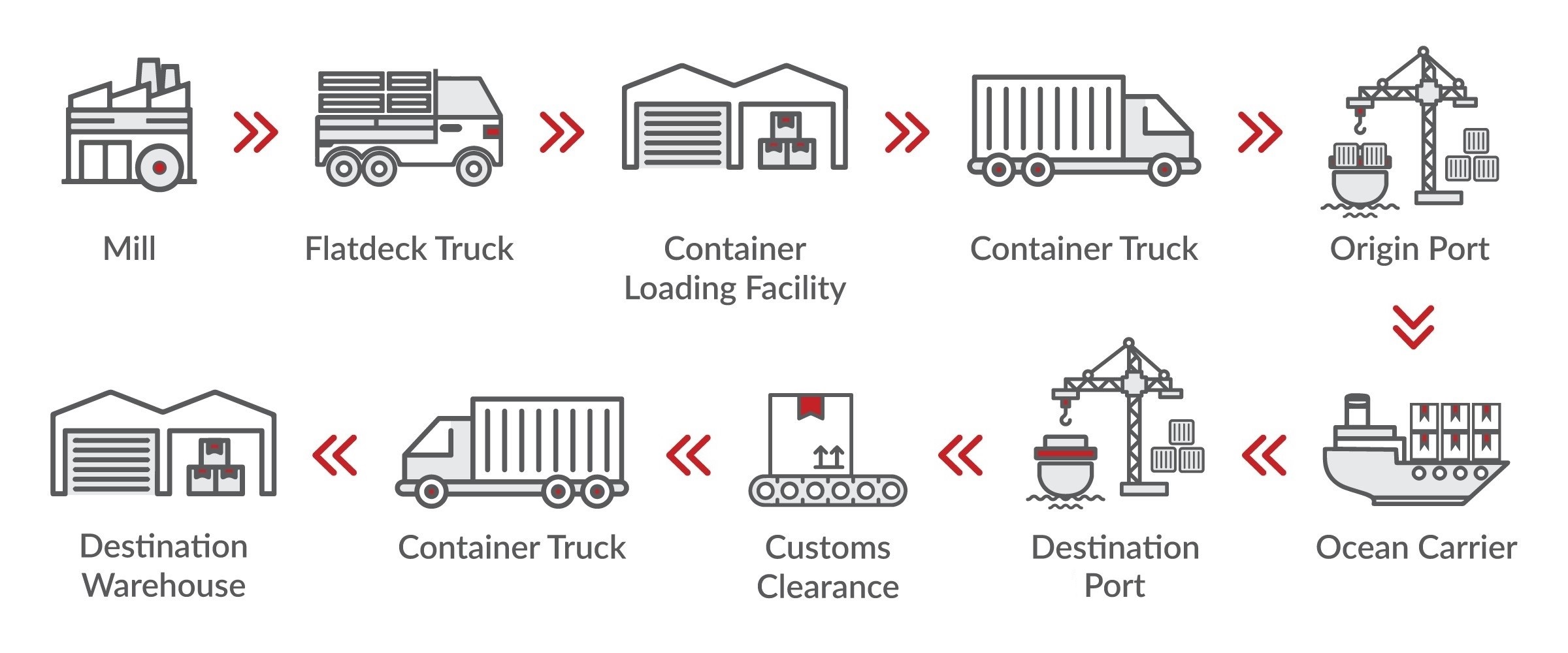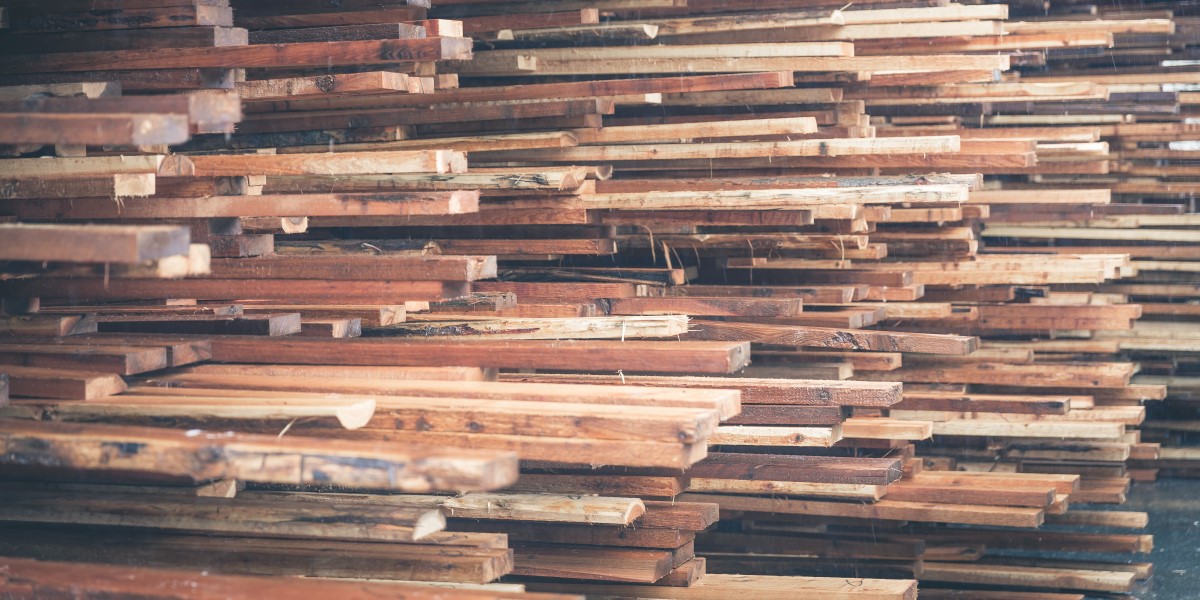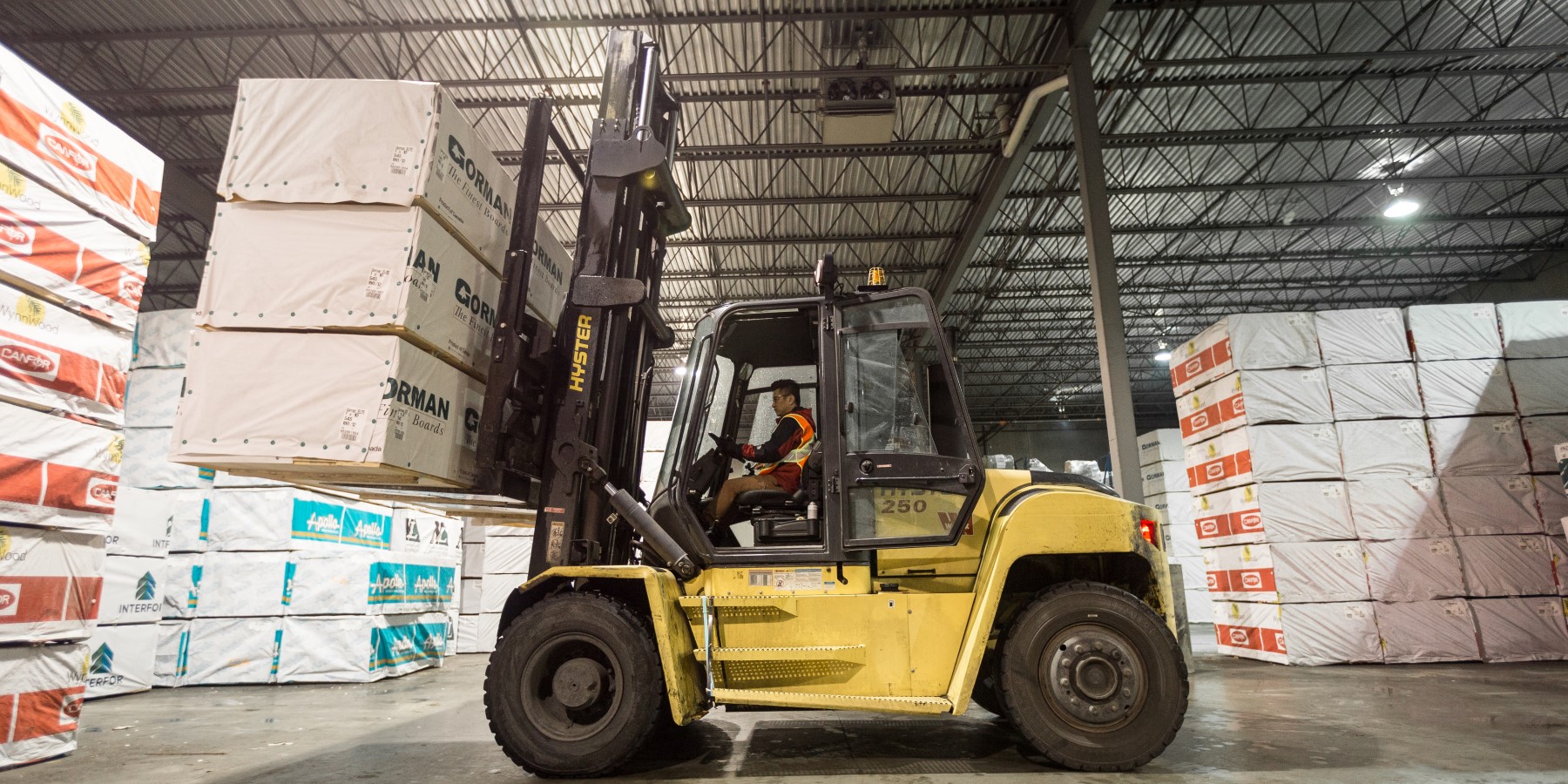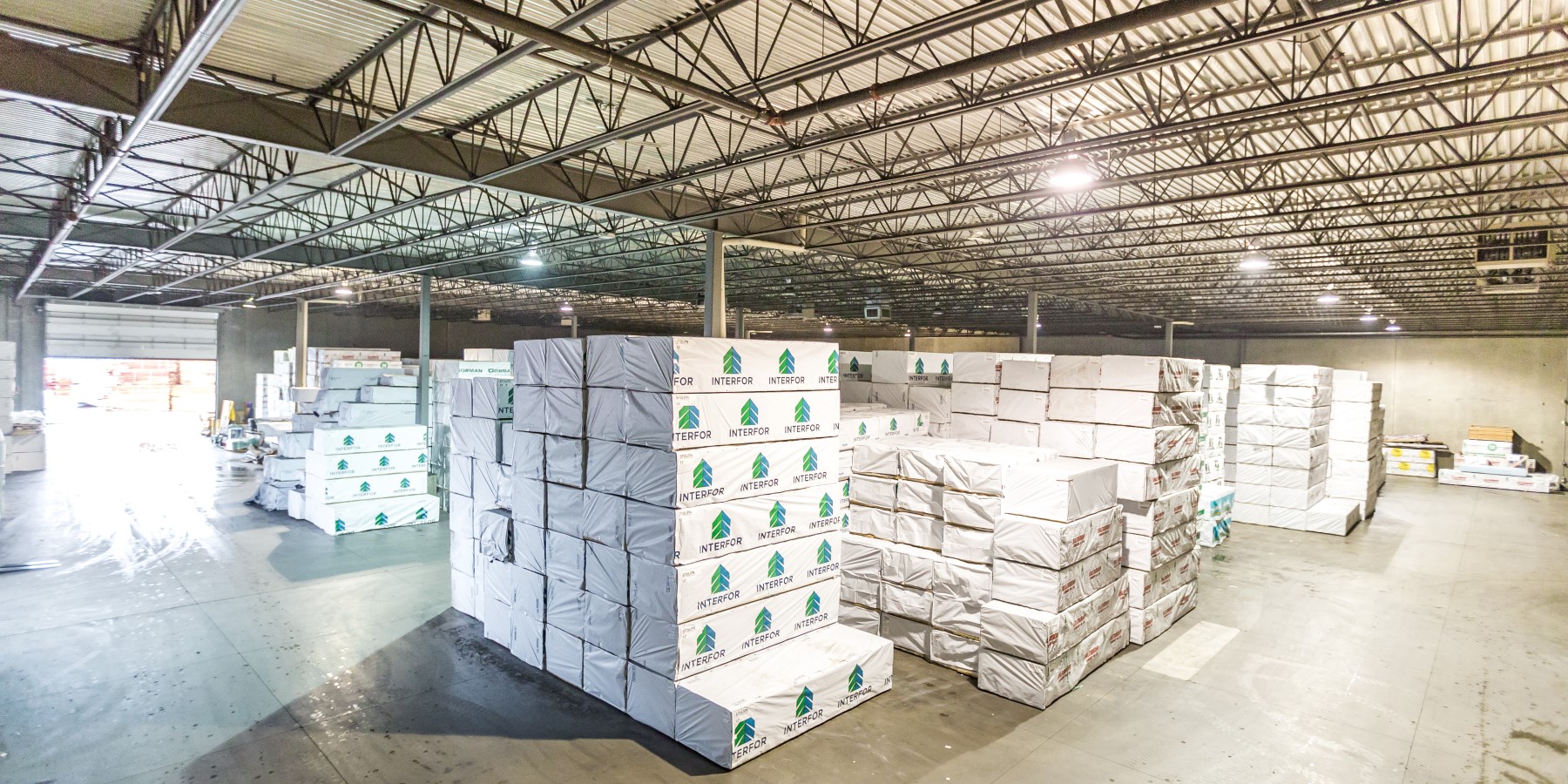Shipping Lumber
A comprehensive guide to exporting and importing lumber in Canada.
Since 1981, Canaan Group has been helping exporters ship lumber from Canada to Japan, Taiwan, China, Korea, Australia, New Zealand, Mexico, and countries in Europe such as France, Germany, UK, and Finland. Our teams have also helped many businesses import lumber into Canada. We put together this comprehensive guide to help you understand the complexities of exporting and importing lumber, and the services that we offer to assist businesses in the process.
The Lumber Export Journey

Exporting Lumber
Challenges of Shipping Lumber
Shipping lumber has a specific set of challenges. A primary challenge is how to protect the lumber. Proper protection depends on several factors, including the species, type, and grade. Canaan Group protects your lumber by maintaining moisture levels and preventing damage to the lumber during storage, loading, and unloading. Weight can also be a challenge as lumber can be extremely heavy and trucks and containers have weight restrictions. Our preparation and expertise can help minimize delays caused by excess weight.
Naturally, cost of shipping and speed of delivery are also challenges. As a freight forwarder, we work hard to give you the best options, taking into account the destination, carrier, shipping route, product weight and size, product packaging, tariffs, and duties. We’ll help you put together a plan to find the best route and schedule and prevent delays so your shipment arrives on time.
At its destination, your lumber will require certain documents. We stay ahead of the industry and government regulations to ensure you have the required documentation, using technology solutions, to avoid costly delays.

How Lumber Species Impacts Shipping
An important thing to know is that the species of your lumber will impact how much can fit in a container. Since containers have size and weight restrictions, heavier species of lumber will reach the weight limits more quickly. This impacts your shipping cost per unit.
Types of lumber we regularly export out of BC include:
- SPF
- Hemlock
- Douglas Fir
- Yellow Cedar
- Red Cedar
- Sitka Spruce
Some destinations have restrictions on specific species of lumber that require particular documentation. For example, China, India, and Vietnam will not accept green unheated and untreated lumber unless you have a phytosanitary certificate issued after a CFIA inspection has been passed (this inspection certifies that the lumber is free from quarantine pests, and practically free from other injurious pests.) If the CFIA inspection is failed, you will need to have the lumber fumigated before the certificate can be issued. Additionally, your lumber must be shipped before the expiry date listed on the certificate. You can read more about these requirements at the Canadian government's website.
Preparing for Exporting Lumber
Here are things you’ll need to have to prepare for lumber shipment:
- Valid business number to export out of Canada
- Type of species
- Where you are buying the product, where the lumber is being produced, and how it is being trucked to the container loading facility
- International vs domestic sizing – many mills provide domestic sizing that often are not ideal for international shipping. We may have to change the package size to maximize the lumber that will fit into the container.
- Destination port
How It Works
Book a shipment
The first step in shipping lumber is to get a quote or multiple quotes for your shipment from us. Once you decide on which date, vessel, and route you want to go with, you can book the space. You will receive a booking confirmation from us stating the product you are shipping, number of containers, destination port, and shipping details such as the cargo cut-off date (when your lumber needs to be at the port by), documentation cut-off date (when your documents need to be submitted by), estimated time of departure, and estimated time of arrival.
Ship the lumber to the container loading facility
Once your lumber is produced and packaged at the mill, it is trucked to our container loading facility on a flatdeck truck (tarped or untarped) or a semi-trailer. The truck driver will have to book a delivery appointment time with our facility. From the time when your lumber arrives to us to when it is loaded onto the vessel, we will store it safely onsite. Depending on the type and grade of your lumber, we will either keep it outside or in our covered warehouse. For example, for kiln-dried lumber, we want to maintain the 12-15% moisture content so we place it in our covered storage to protect the integrity and quality of the wood. There are different costs associated with storing the lumber inside vs. outside. Our forklift drivers are familiar with the grades of lumber (J grade, #2, #3, etc.), and are experienced in handling the loading and unloading with care to ensure nothing is damaged in the moving.

Prepare the lumber for shipment
Several things happen in preparation for shipment. If your lumber needs to be repackaged due to domestic/international sizing differences, we will repackage it. If required, a CFIA inspection will also be arranged. We will pick up the empty container(s), pick and pack the lumber for the shipment, load your lumber into the container(s), weigh them, and attach a seal to secure the container(s) from being opened during shipment. If your lumber fails the CFIA inspection, we will help you arrange for fumigation. Finally, we will deliver the container(s) to the port before the cargo cut-off date.
Prepare proper documentation
Properly filled out and complete documentation is essential for a smooth shipping process. Canaan Group is pleased to keep up-to-date on the latest rules, regulations, and legislative changes to help you meet all the requirements from government agencies. We will help you compile all the proper documentation you need, including duties, licenses, permits, and other brokerage requirements so that your shipment is cleared in optimal time. Our documents will also include all the information pertaining to your shipment such as the packages of lumber in the container(s), the weight(s) and seal number(s). If you are using the electronic export declarations portal, The Canadian Export Reporting System (CERS), we can help you with electronically submitting your declaration. We can also offer guidance with your export documents such as commercial invoices, packing lists, bills of lading, or letter of credit.
It is important for you to note and abide by the documentation cut-off date as this is the latest date your documentation and Verified Gross Mass of the loaded container(s) must be submitted to our team. Our goal is to reduce delays caused by errors in documentation and we need to have your documents in time in order to do this.
Containers are shipped to destination
When your containers are being shipped to their destination, you can check the status of your shipment by logging onto our Global Logistics Tracking System. There you can see if there are changes in the estimated arrival time, as well as other important dates. If you or your customer need assistance with customers clearance, picking up the containers, unloading the containers, or delivery of the lumber to the final destination, we have 185 offices around the world with agents that can assist you. Just let us know what you need and we will find solutions for you.

Importing Lumber
When it comes to importing lumber into Canada, our team at Canaan Group can help you with the customs clearance, unloading, and delivery of the lumber. Here are a few things for you to consider:
Customs Clearance and Documentation
Our team can guide you in processing the documentation required for customs clearance, so there are no unnecessary delays to your shipment. We’ll need to know the country of origin and the HS code, so we can help you confirm any tariffs or restrictions. Depending on the species type and whether it has been heat treated or not, a Phytosanitary certificate may be required. A Phytosanitary certificate is an official document issued by the plant protection organization of the exporting country to the plant protection organization of the importing country. Our team will also need your importer number.
Once we have the shipment details, we can monitor the status of the vessel the lumber is on, so we can process the documentation when it arrives.
Lumber Delivery
The receiving facility and the equipment they have in their facility will impact how we deliver the lumber. If the facility has a loading dock, then we can pick up the container and delivery it directly to the facility. If the facility does not have a loading dock but has a forklift, we will transload the lumber from the container onto a flatdeck truck. This can be done at our container loading facility in Richmond. The species and grade of the lumber will determine whether the lumber needs to be tarped, to protect it from moisture.
Book a Consultation
If you are looking to ship lumber, book a consultation with us. We can discuss your needs, answer your questions, explain how it works, and explore your options to help you create a customized shipping plan. We can also give you a quote on your project so you know how best to move ahead. We look forward to serving you!

